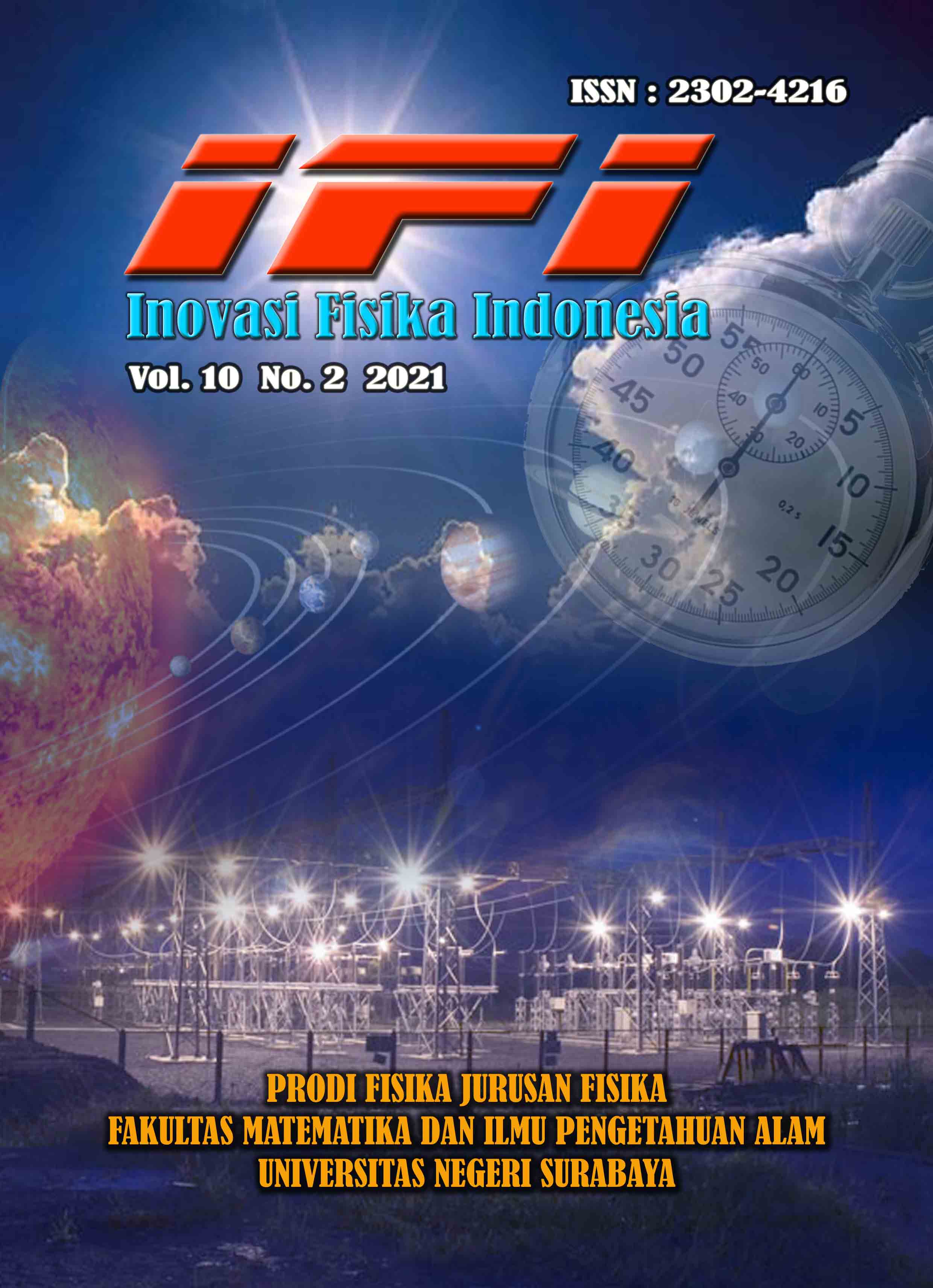ANALISIS PREDIKSI DEBIT ALIRAN AIR LAUT MELALUI SELAT UNTUK KASUS DI LUAR INDONESIA DAN DI INDONESIA DENGAN BANTUAN TEORI HIDROLIK INTERNAL
Keywords: ITF, internal hydraulic theory, exchange flow, mixing, volume transport
DOI:
https://doi.org/10.26740/ifi.v10n2.p9-16Abstract
AbstrakPosisi Indonesia adalah strategis karena berada di jalur aliran air laut dari Samudera Pasifik ke Samudera Hindia melalui beberapa selat di wilayah perairan Indonesia bagian timur yang dikenal sebagai Arus Lintas Indonesia (Arlindo). Transportasi air laut melewati selat penghubung kedua samudera tersebut bisa memengaruhi sirkulasi air laut dan iklim dalam skala lokal, regional, dan global. Dalam penelitian ini, Arlindo dipelajari melalui model oceanic exchange flow dengan bantuan teori hidrolik internal yang diterapkan untuk two-layer exchange flow through a strait or over a sill. Besaran fisis yang akan ditentukan adalah volume transport melalui selat sempit dengan penyempitan lateral atau vertikal dalam bentuk normalised volume exchange (bilangan tak berdimensi sebagai hasil bagi antara observed volume dan maximal volume exchange sebagai batas atas volume transport), di mana volume transport melewati selat dihitung dengan mempertimbangkan efek mixing. Data penelitian ini diambil dari laman https://maps.ngdc.noaa.gov/viewers/bathymetry/ dan https://salinity.oceansciences.org/. Kasus yang dibahas adalah beberapa selat terkenal di dunia dan selat Arlindo. Untuk seluruh kategori selat baik selat dengan kontrol hidrolik berupa contraction atau sill, normalised volume exchange ditemukan selalu kurang dari 0,87 (batas atas volume exchange with mixing). Reduksi volume transport juga diberikan oleh friksi sepanjang dasar selat dengan topografi kasar dan batimetri tak beraturan. Hasil penelitian menunjukkan bahwa normalised transport melalui Selat Gibraltar adalah 0,86 (tipikal exchange flow with a small contribution of friction), serupa dengan kasus selat Arlindo di Indonesia, di mana rata-rata normalised transport adalah 0,83. Hal ini membuktikan bahwa teori hidrolik internal bisa digunakan untuk prediksi volume transport.
Kata Kunci: Arlindo, teori hidrolik internal, exchange flow, mixing, volume transport
AbstractIndonesia is strategic for its geographic position in water circulation pathway from Pacific to Indian Oceans through relatively narrow straits in eastern Indonesian provinces widely known as the Indonesian Throughflow (ITF). Water transport past the straits connecting the Oceans can modify ocean circulation and climate in local, regional and global scales. In this study, the ITF was examined using oceanic exchange flow in the light of internal hydraulic theory applied to two-layer exchange flow through a strait or over a sill. The study is aimed to determine volume transport past a strait with a simple topography, where the transport was calculated as normalised volume exchange (a non-dimensional number representing the ratio of observed volume transport and maximal volume exchange in the presence of mixing). The data included ocean depth from https://maps.ngdc.noaa.gov/viewers/bathymetry/ and ocean salinity and/or density acquired from https://salinity.oceansciences.org/. Cases discussed were the exchanges in ocean straits worldwide and in Indonesian waters. For all straits examined with hydraulic control either a contraction or a sill, the normalised exchange was found to be less than 0.87 (the upper bound for the exchange with mixing). Further transport reduction was due to friction along bottom boundary with rough topography and irregular bathymetry. The results showed that the exchange in the Gibraltar was found to be 0.86 (typical exchange flow with a small contribution of friction), similar to ITF where the mean transport was 0.83. These suggest that internal hydraulic theory is effective to predict volume transport.
Keywords: ITF, internal hydraulic theory, exchange flow, mixing, volume transport
Downloads
Downloads
Published
How to Cite
Issue
Section
 Abstract views: 533
,
Abstract views: 533
, PDF Downloads: 412
PDF Downloads: 412








1.png)
